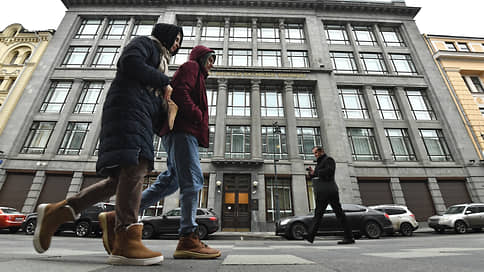The Ministry of Finance made it a rule – Newspaper Kommersant No. 4 (7449) dated 01/12/2023
[ad_1]

After a ten-month pause, the Ministry of Finance resumes interventions in the foreign exchange market on January 13 under the budget rule revived in a new form. The return takes place in a somewhat unusual form: for now, the department will not buy, but sell the currency through the Central Bank (previously, it was mostly about acquiring it in reserves), and these will no longer be recognized as “toxic” dollars, euros and pounds, but only the Chinese yuan . The Ministry of Finance and experts expect that the resumption of operations will reduce the impact of the global oil and gas market on Russian public finances, including smoothing out fluctuations in the ruble exchange rate.
The Ministry of Finance of the Russian Federation announced on Wednesday that from January 13 to February 6 it will send foreign currency worth 54.5 billion rubles for sale on the market, the daily volume of interventions will amount to 3.2 billion rubles. During this period and beyond, “operations to buy / sell currency will be carried out by the Bank of Russia on the domestic market in the currency section of the Moscow Exchange in the Chinese yuan-ruble instrument,” the agency explained. Interventions are being resumed “in order to increase the stability and predictability of domestic economic conditions, as well as reduce the impact of volatile energy market conditions on the Russian economy and public finances.” As a result of trading on Wednesday, the dollar, euro and yuan fell noticeably on the Moscow Exchange, the ruble strengthened.
The return of the Ministry of Finance to the market was unexpected for many of its participants, but the law on a new design of budget rules that allows this was adopted by the State Duma back in the fall. Let us recall that we are talking about the practice, which began back in 2017, of daily purchases of foreign currency within the framework of the previous budget rule in order to reduce the dependence of the ruble exchange rate on fluctuations in oil prices and to replenish reserves. In the history of these operations, there were, however, periods of operation of the “in the other direction” mechanism: with the fall in oil prices from April to December 2020, the Ministry of Finance did not buy, but sold the currency. The last time the Ministry of Finance determined the amount of such interventions was in early February. After the start of the military operation of the Russian Federation in Ukraine, purchases were suspended along with budgetary rules. As it turned out now, almost for a ten-month period.
During the year, most of the additional oil and gas revenues went to current expenses, and by the end of 2022, the government passed a law on new, softer budget rules through the State Duma. In a truncated form, they have been working since 2023 (in terms of replenishing reserves), in full (with the rules on setting a ceiling on expenses) they will come into force from 2025. Due to sanctions affecting the volume of Russian oil production and the size of the price discount, the authorities decided to move away from the “cut-off price” and the ruble exchange rate when dividing oil and gas revenues into those that can be spent and those that should be saved. Without any special calculations, the basic oil and gas revenues were determined by a “hard” amount of 8 trillion rubles. (this actually raised the cut-off price from $44 to $62-63 per barrel).
The Ministry of Finance gave the layout of the “base” by months in yesterday’s message. In January, basic oil and gas revenues will amount to 585.1 billion rubles, then they will fluctuate in the range from 653.4 billion to 694.3 billion rubles. per month. If the forecast income is higher than the “base”, the Ministry of Finance will buy the currency for the excess amount, if it is lower, it will sell it. It is the second scenario that is being implemented now. In recent weeks, Urals has fallen in price: in December it cost only $50.5 per barrel with the 2023 budget calculated on the basis of $70.1 (see Kommersant on January 9). In January, according to the Ministry of Finance, the volume of lost oil and gas revenues will amount to 54.5 billion rubles. It is this amount (the equivalent in yuan) that the Ministry of Finance will send for sale from January 13 to February 6.
Dmitry Polevoy from Loko-Invest believes that with the current parameters (3,330 rubles per barrel of Urals and December production of 10.5-11 million barrels per day), in the coming months the Ministry of Finance will most likely be forced to sell the currency, not buy. According to the analysts of the Solid Numbers Telegram channel, in the context of the price ceiling for Russian oil, purchases can only resume if the ruble weakens significantly, and purchases in this scenario will become an additional destabilizing factor. However, they estimate that the resumption of operations will smooth out exchange rate fluctuations associated with volatility in Russian oil prices and volumes.
[ad_2]
Source link






